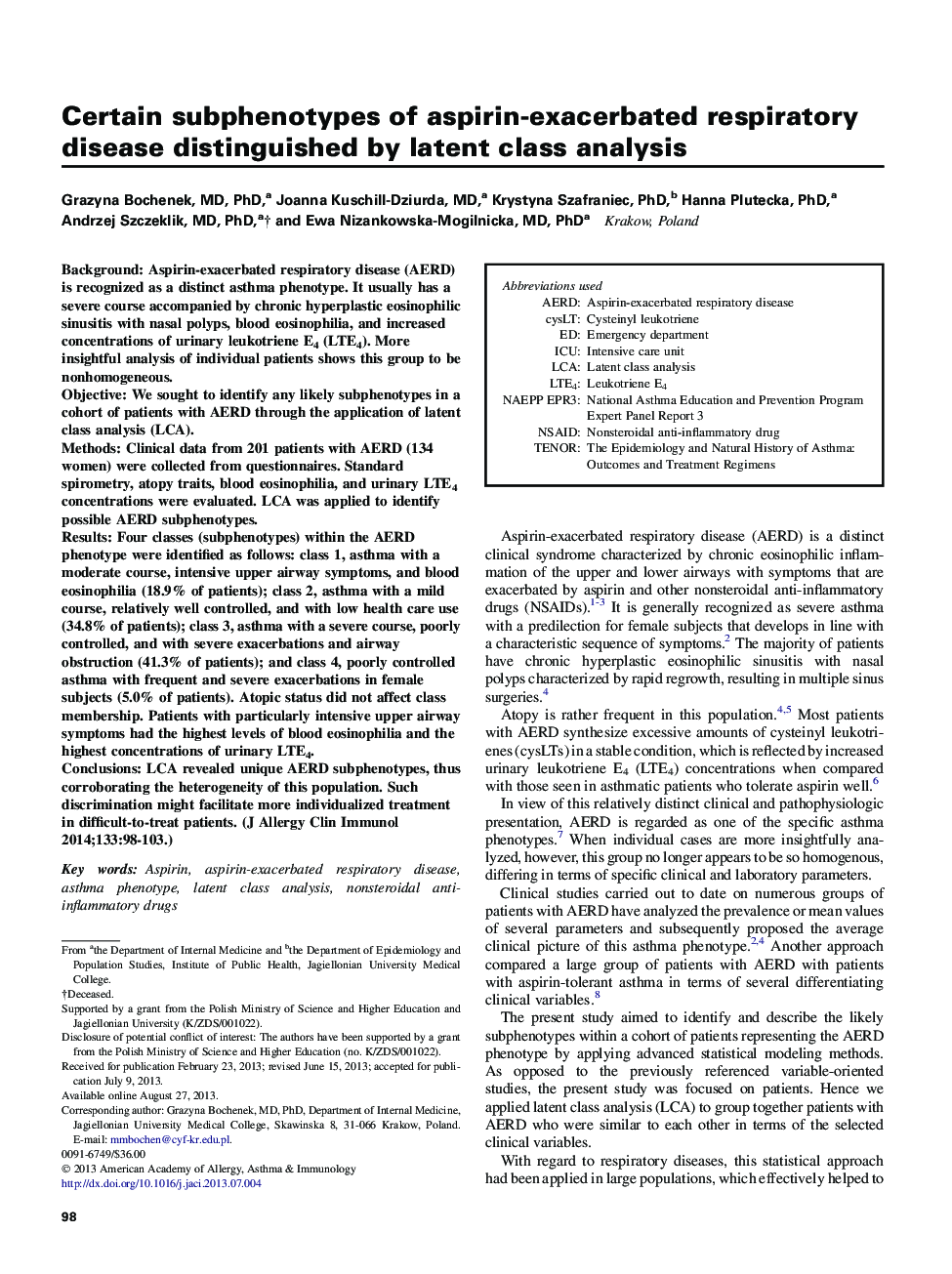| کد مقاله | کد نشریه | سال انتشار | مقاله انگلیسی | نسخه تمام متن |
|---|---|---|---|---|
| 6064848 | 1201865 | 2014 | 12 صفحه PDF | دانلود رایگان |
BackgroundAspirin-exacerbated respiratory disease (AERD) is recognized as a distinct asthma phenotype. It usually has a severe course accompanied by chronic hyperplastic eosinophilic sinusitis with nasal polyps, blood eosinophilia, and increased concentrations of urinary leukotriene E4 (LTE4). More insightful analysis of individual patients shows this group to be nonhomogeneous.ObjectiveWe sought to identify any likely subphenotypes in a cohort of patients with AERD through the application of latent class analysis (LCA).MethodsClinical data from 201 patients with AERD (134 women) were collected from questionnaires. Standard spirometry, atopy traits, blood eosinophilia, and urinary LTE4 concentrations were evaluated. LCA was applied to identify possible AERD subphenotypes.ResultsFour classes (subphenotypes) within the AERD phenotype were identified as follows: class 1, asthma with a moderate course, intensive upper airway symptoms, and blood eosinophilia (18.9% of patients); class 2, asthma with a mild course, relatively well controlled, and with low health care use (34.8% of patients); class 3, asthma with a severe course, poorly controlled, and with severe exacerbations and airway obstruction (41.3% of patients); and class 4, poorly controlled asthma with frequent and severe exacerbations in female subjects (5.0% of patients). Atopic status did not affect class membership. Patients with particularly intensive upper airway symptoms had the highest levels of blood eosinophilia and the highest concentrations of urinary LTE4.ConclusionsLCA revealed unique AERD subphenotypes, thus corroborating the heterogeneity of this population. Such discrimination might facilitate more individualized treatment in difficult-to-treat patients.
Journal: Journal of Allergy and Clinical Immunology - Volume 133, Issue 1, January 2014, Pages 98-103.e6
